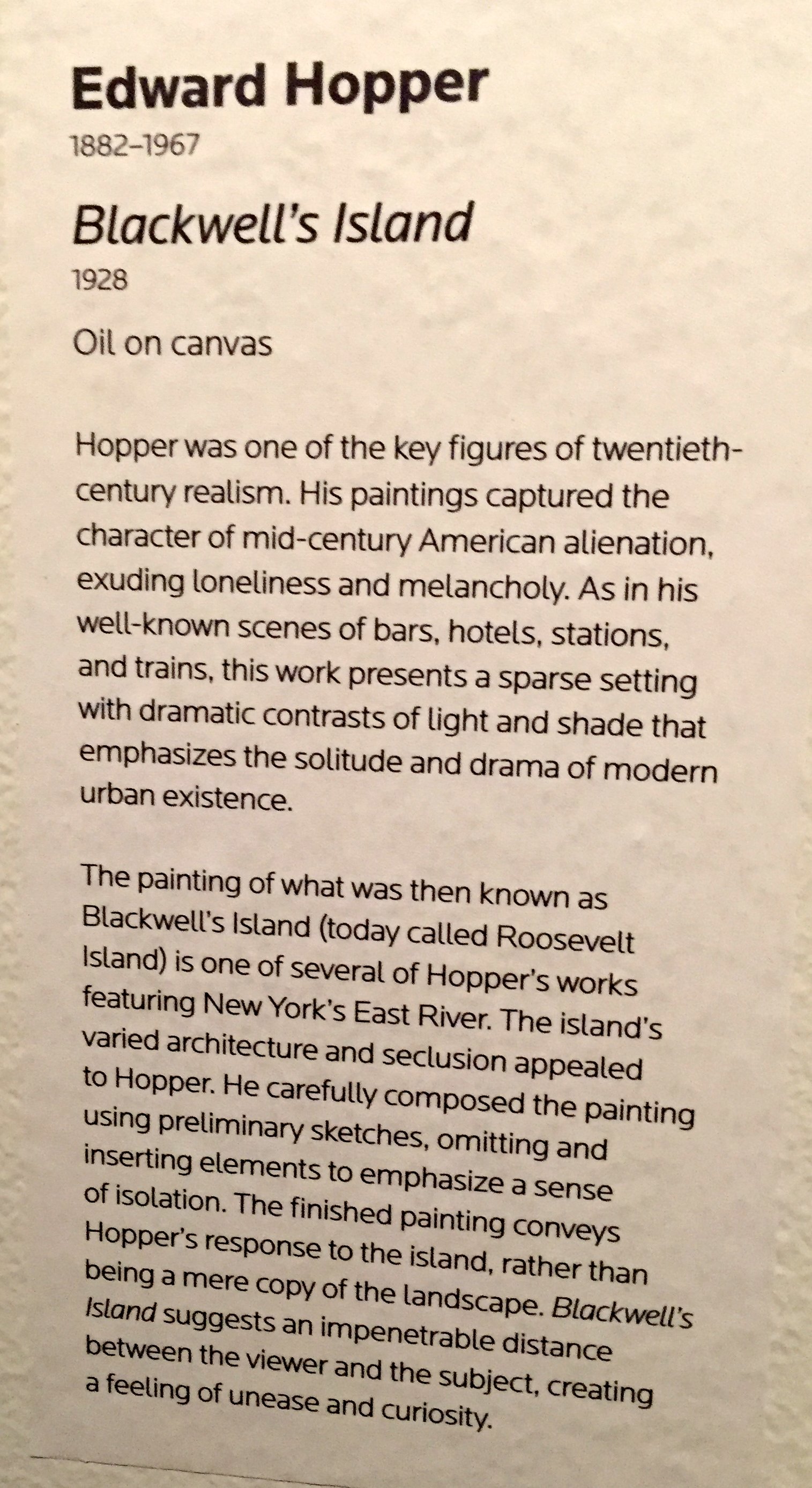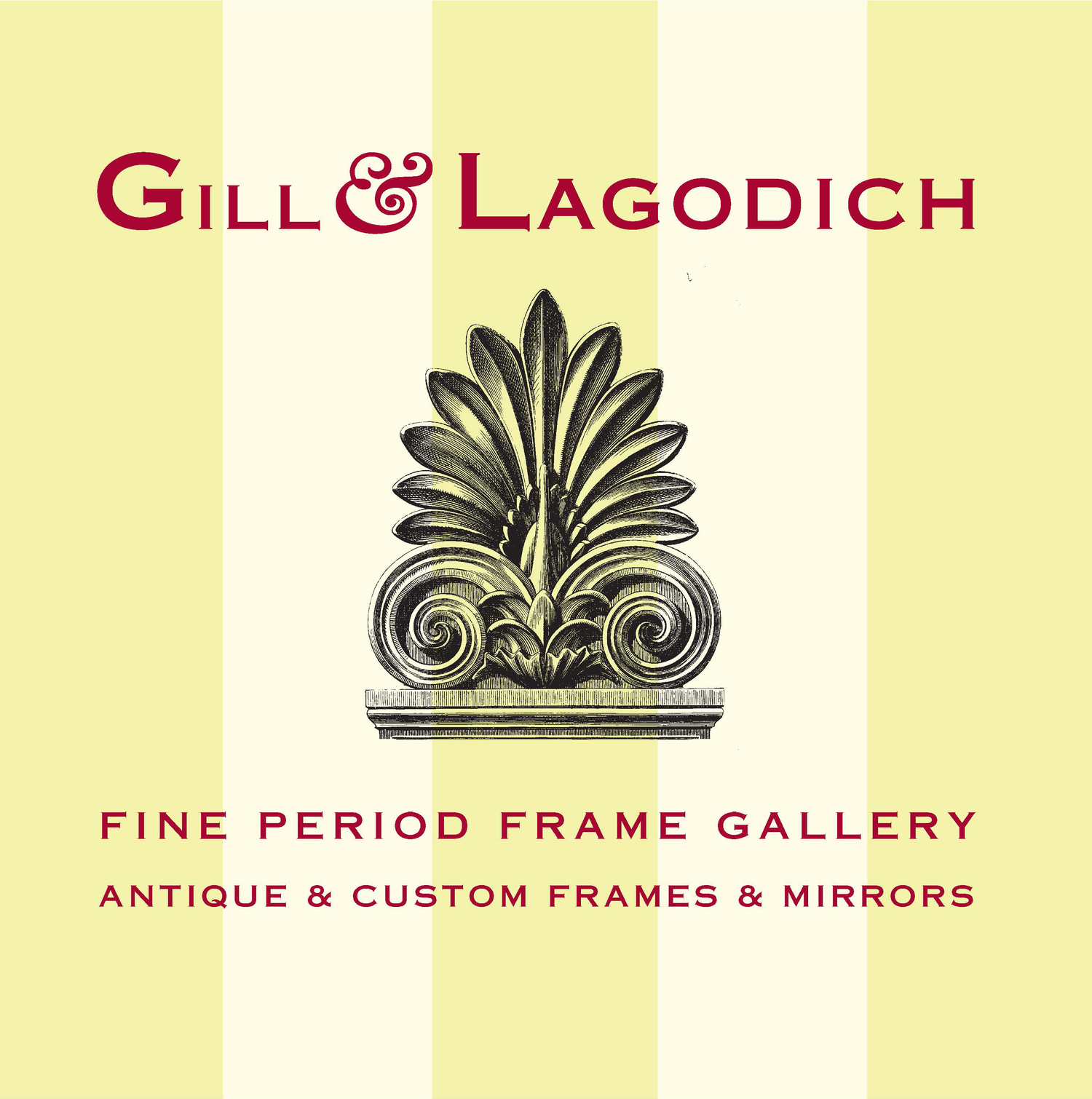CRYSTAL BRIDGES MUSEUM OF AMERICAN ART, BENTONVILLE, ARKANSAS
Gill & Lagodich has framed twenty-seven paintings for Crystal Bridges in both period and custom-made replicas of period frames in the G&L collection. Prior to the museum's Grand Opening in November 2011, we also restored fifteen museum-owned frames —primarily original to their paintings— in our New York restoration studios. A list of artists appears below.
Provision of period frames for paintings by James Henry Beard, William Merritt Chase, Thomas Cole, LeFevre James Cranstone, John Haberle, F. Childe Hassam, John Frederick Kensett, John LaFarge, George Luks, Alfred H. Maurer, Charles Ethan Porter, William Rimmer, John Singer Sargent, George H. Smillie, and Susan Waters.
Provision of custom-made Replica frames for paintings by Frank W. Benson, Ralston Crawford, Edward Hopper, Luigi Lucioni, Jervis McEntee, Thomas Moran, George W. Pettit, Dorothea Tanning, James McNeill Whistler, Hale Aspacio Woodruff, James Wooldridge.
Restoration of museum-owned frames original to paintings by Thomas Cole, Gerardus Duyckinck (six portrait frames), James Earl, Martin Johnson Heade, John Koch, Roger Medearis, John F. Peto, Leon Pomarede, Abbott H. Thayer.
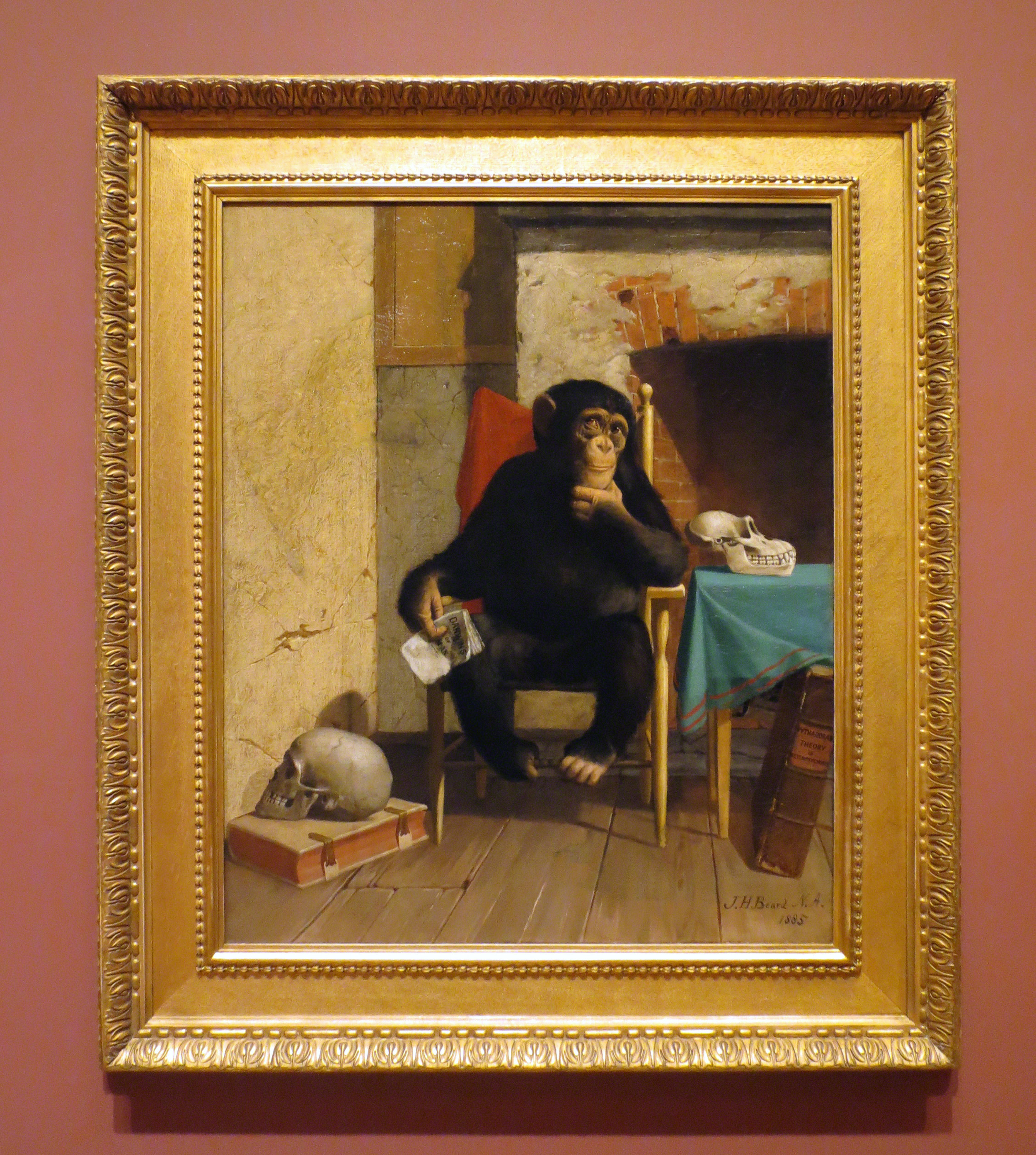
JAMES HENRY BEARD (1812–1893)
It’s Very Queer Isn’t It?, 1885, oil on canvas, 32-1/8” x 26-1/16” PERIOD FRAME c. 1880s-1900 American Watts-style painting frame; gilded applied composition ornament with gilded quarter-sawn oak panel. Excellent original gilding and patina. Molding width: 5-1/2”
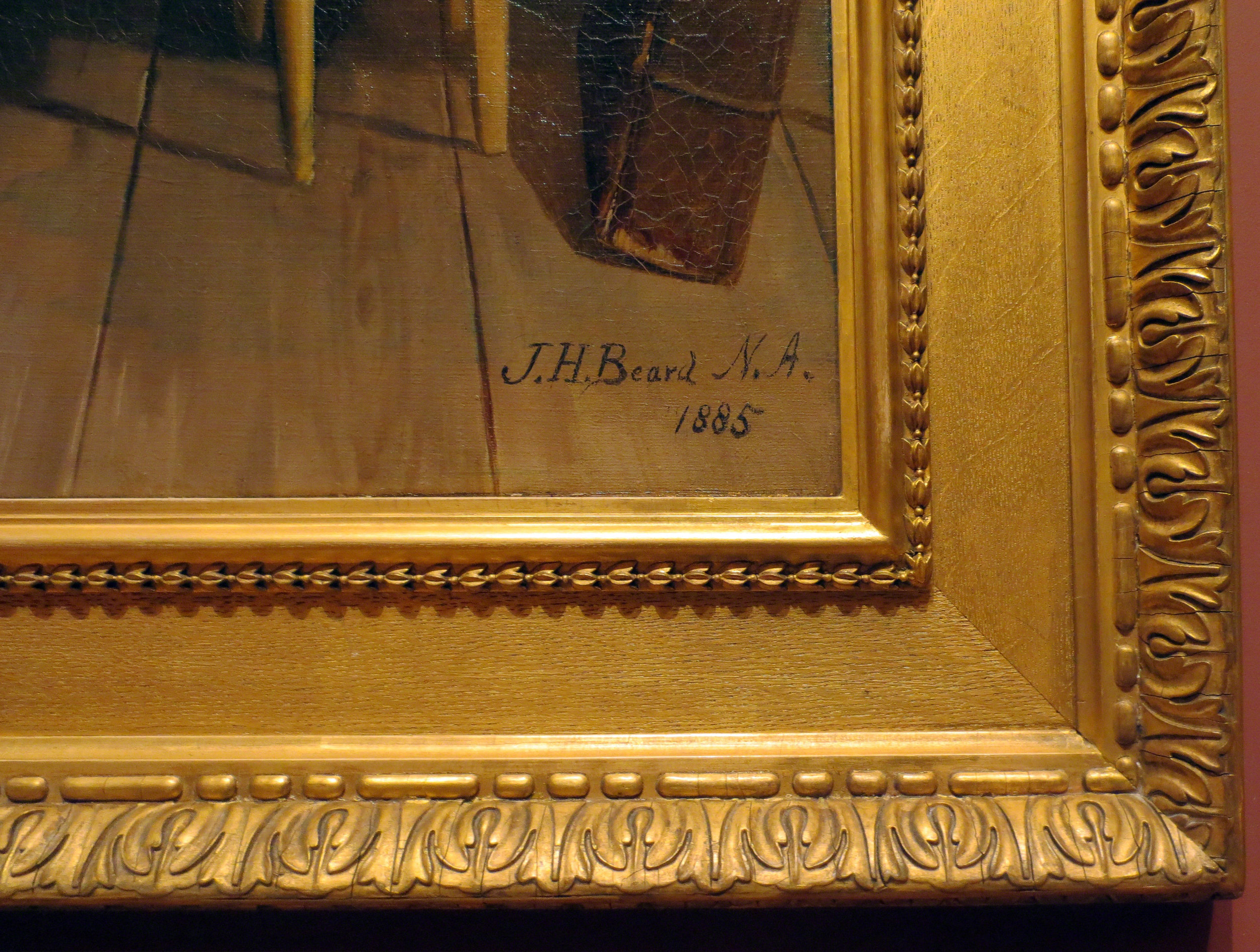
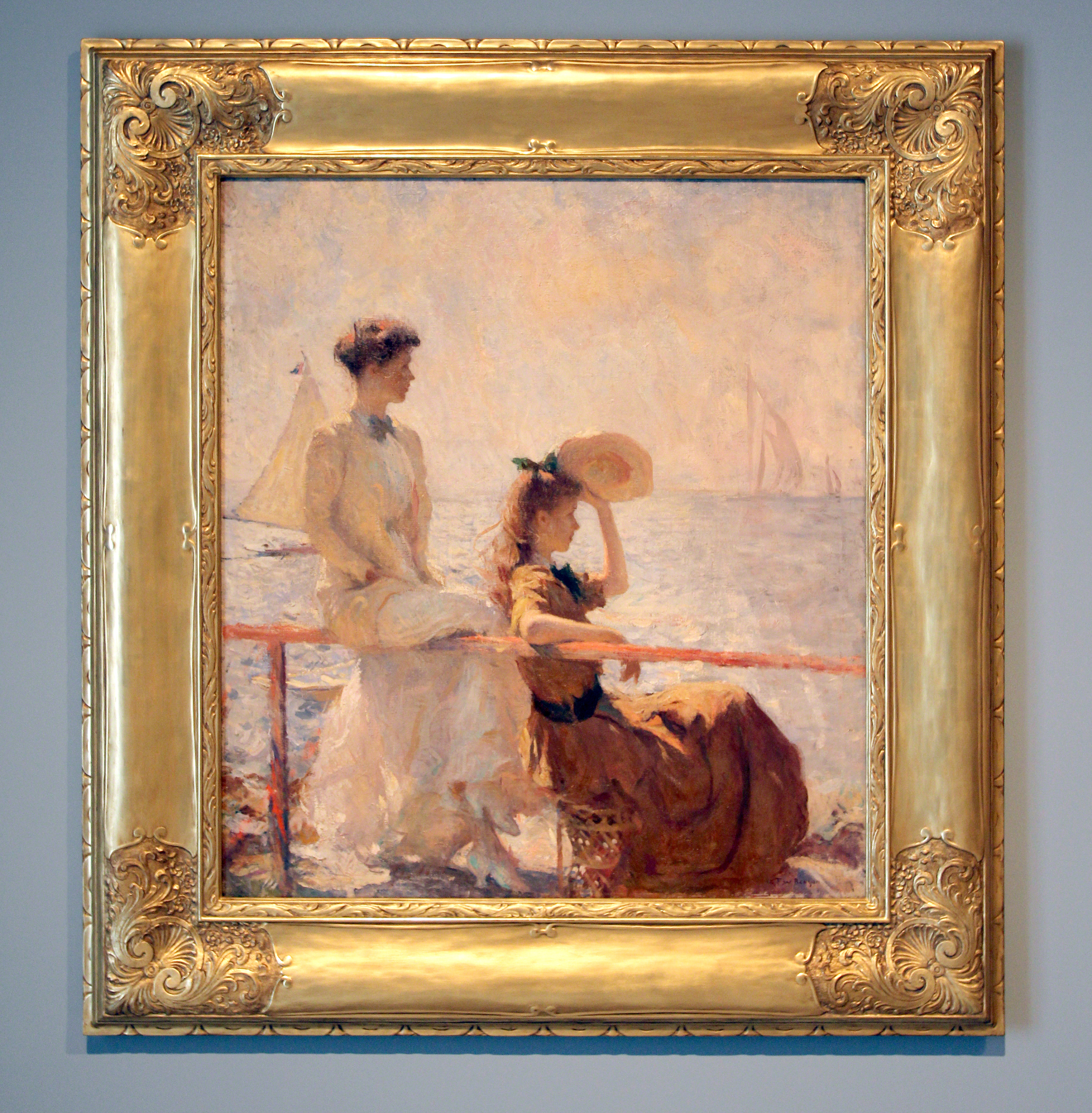
FRANK WESTON BENSON (1862 – 1951)
Summer Day, 1911, oil on canvas, 36-1/8 x 32-1/8 inches, framed by Gill & Lagodich in a custom-made replica c. 1911 American Arts and Crafts painting frame; lemon-gilded hand-carved and cast ornament on wood; molding width 7” Note: original frame: hand-carved signature verso: 19 M 11 / Carrig-Rohane/ Thulin-Murphy Co./Boston / #926. "'Summer Day' can be seen as Benson’s affectionate comparison of his young daughters’ radiance and beauty to that of nature itself, an assertion of their essential equivalence to summer’s warmth, light, and air. The sunny outdoor scene depicts eighteen-year-old Elisabeth and thirteen-year-old Sylvia casting their eyes toward the high horizon line, where the boundary between sea and sky nearly dissolves. The billowing sails on and just below the horizon reinforce a sense of gentle movement, as do the girls’ cascading gowns, loosely arranged hair, and decorative ribbons, all of which are enveloped by soft ocean breezes. Benson’s broken brushwork appears lightly but quickly stroked, and his high-keyed palette of whites and white-inflected blues glinting off the summer sea is a ravishing display of Impressionist technique perfectly tuned to his ephemeral, sun-shot subject."
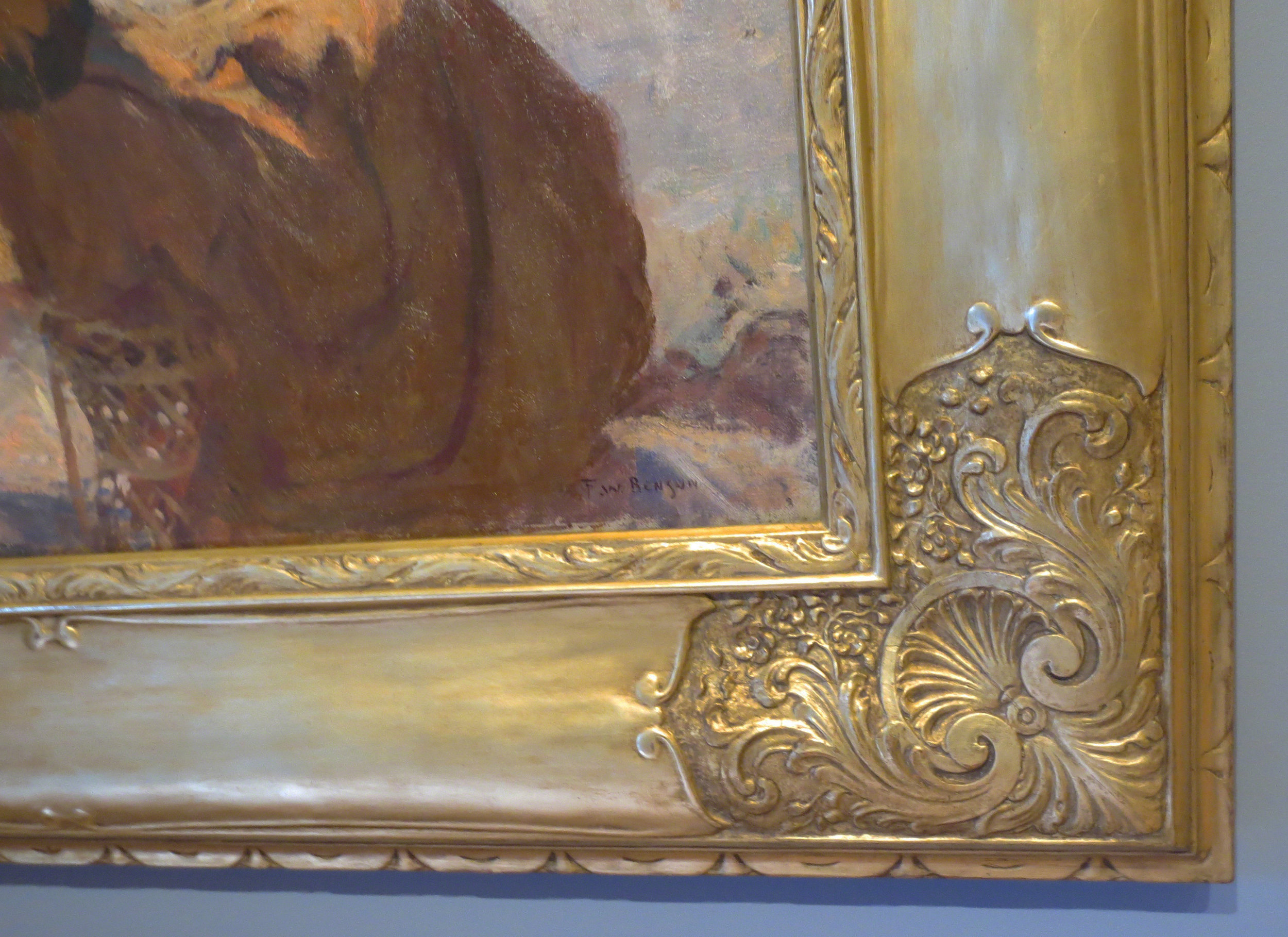
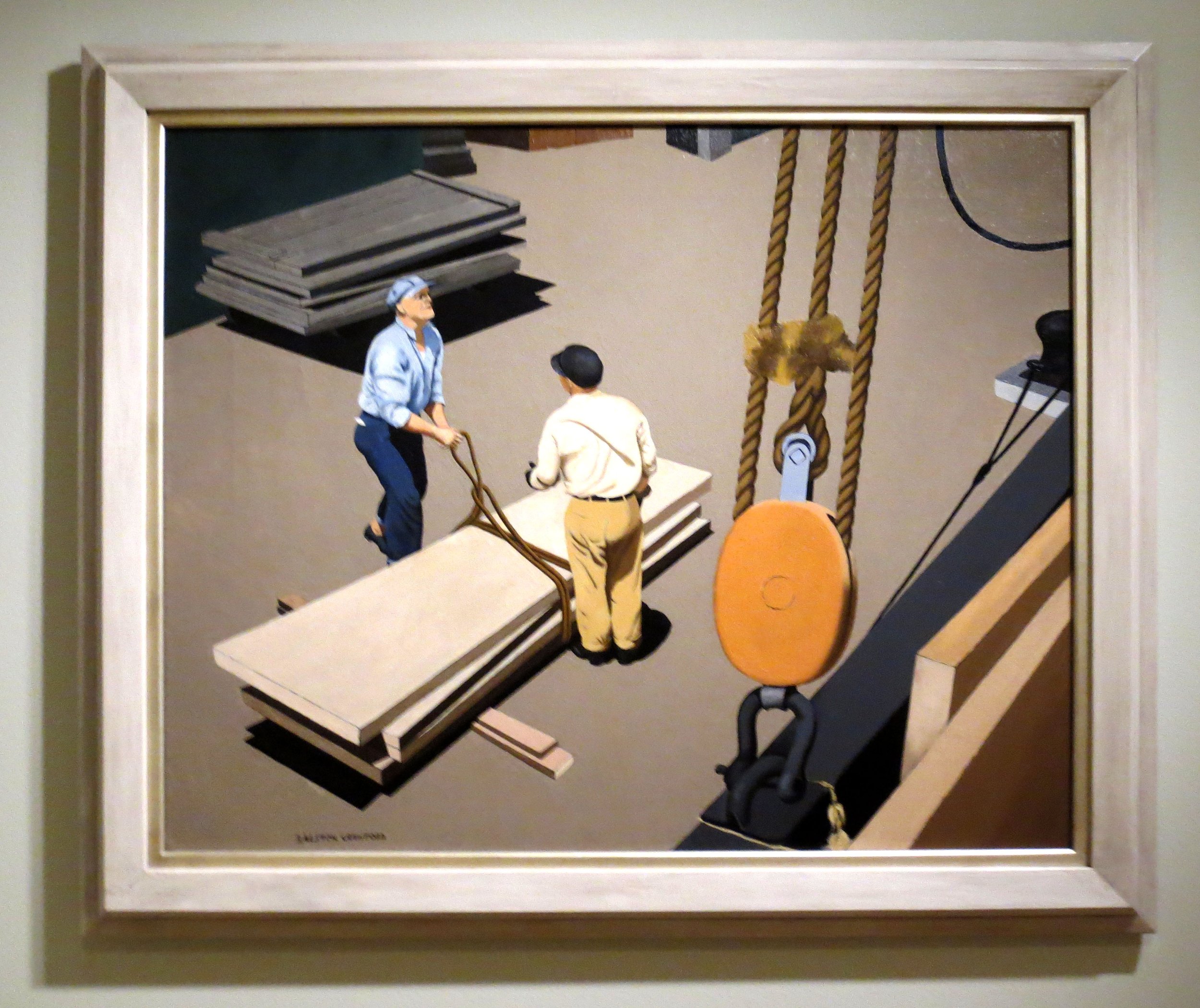
RALSTON CRAWFORD (1906–1978)
Ships and Sailors, 1938, oil on canvas, 32-1/4 x 40 in. Framed by Gill & Lagodich for Crystal Bridges Museum of American Art. Custom-made replica of c. 1930s American Modernist molding, polychrome finish on gesso on wood, molding width: 3-1/2”
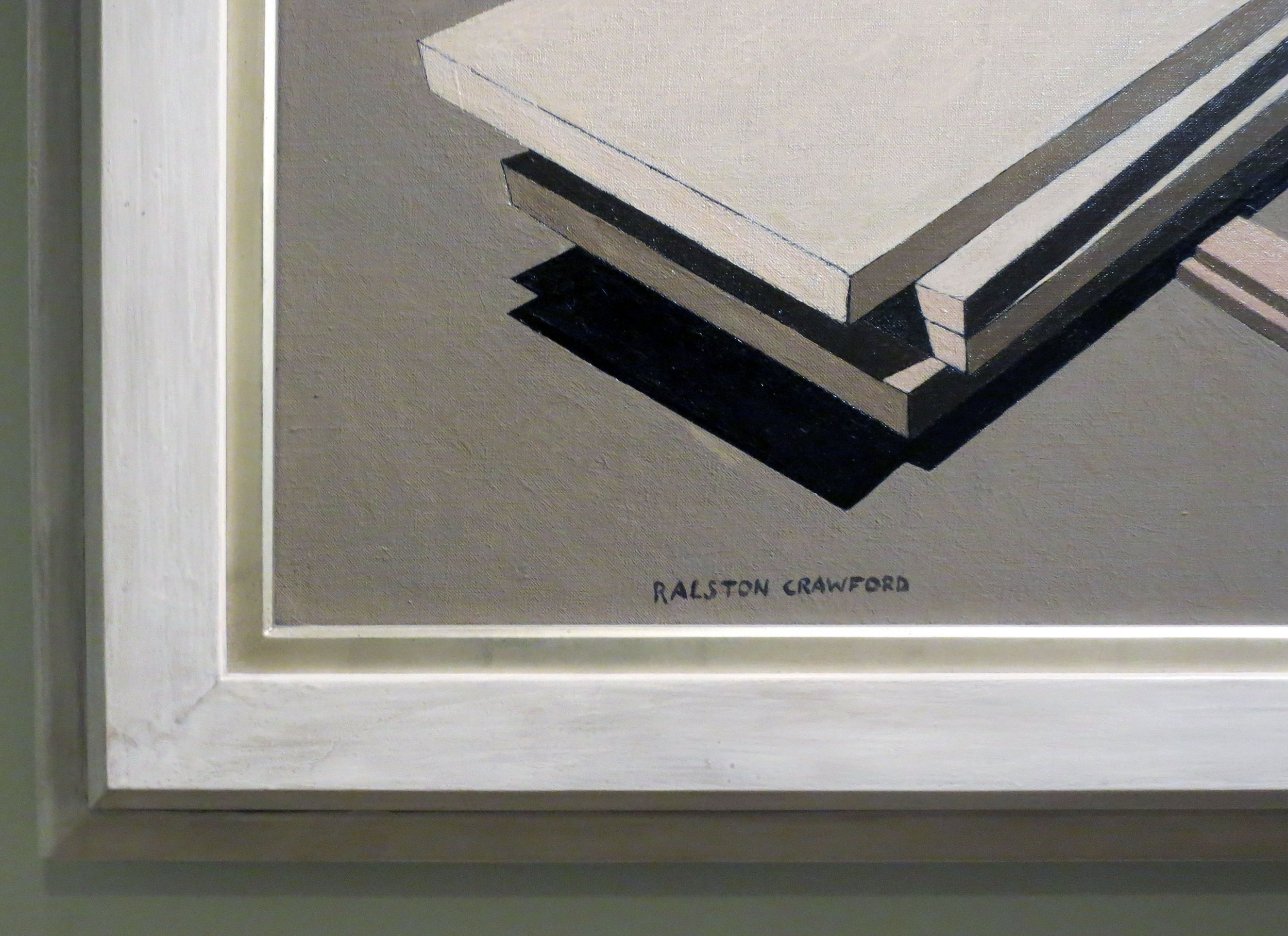
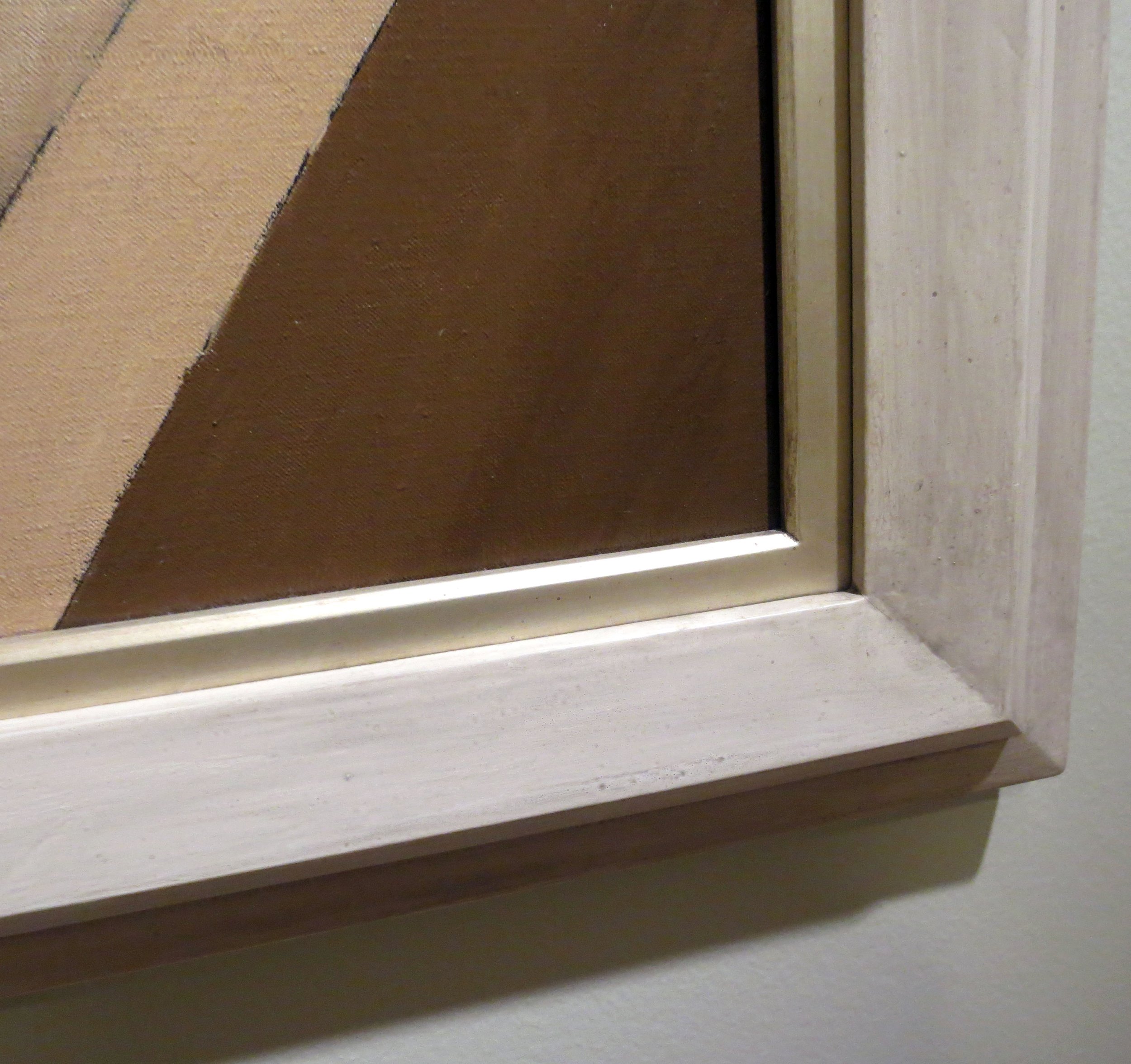
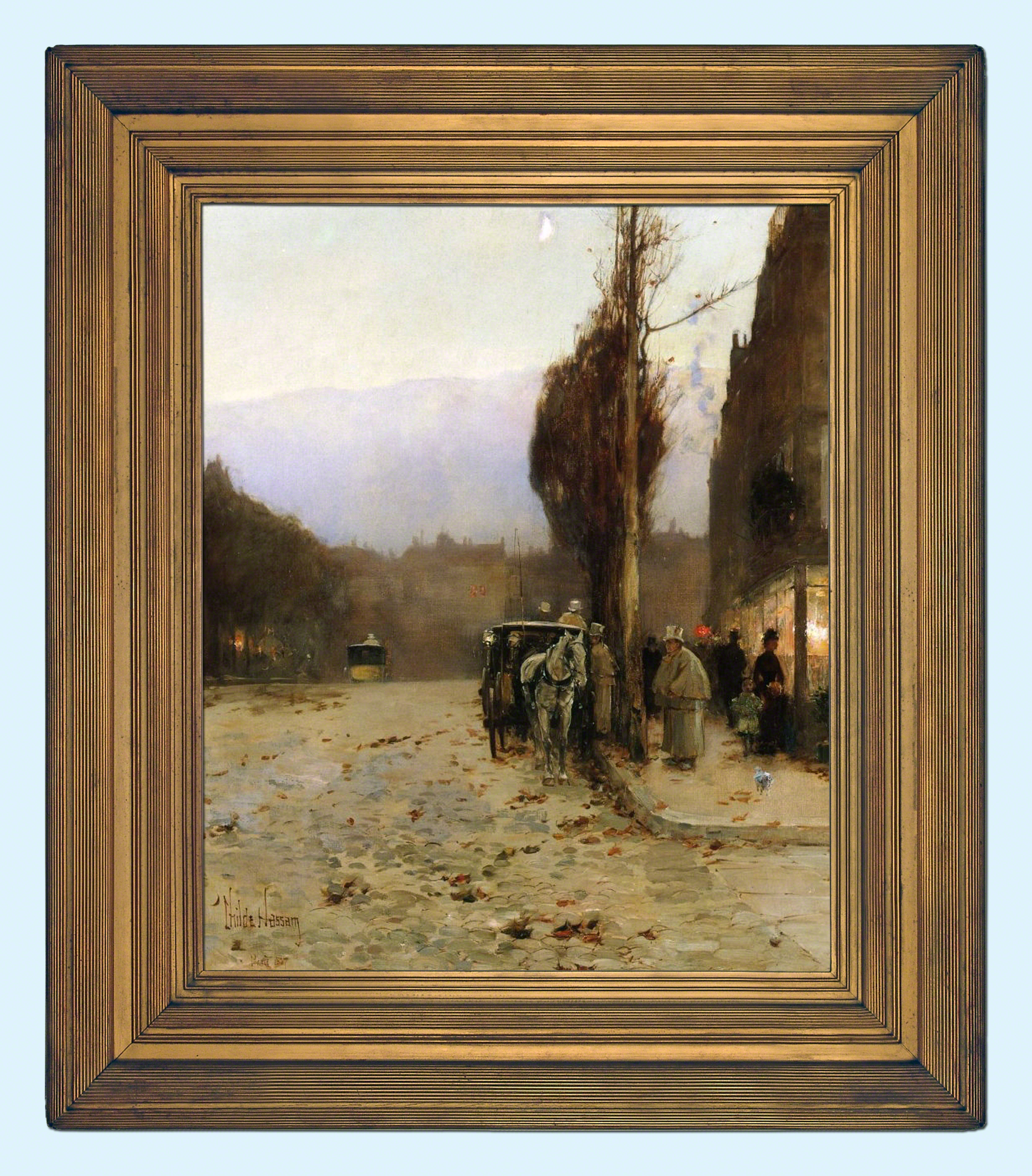
FREDERICK CHILDE HASSAM (1859 – 1935)
Paris At Twilight, oil on canvas, 1887, 25-1/2" x 21-1/4", period American Whistler-style gilded wood frame.
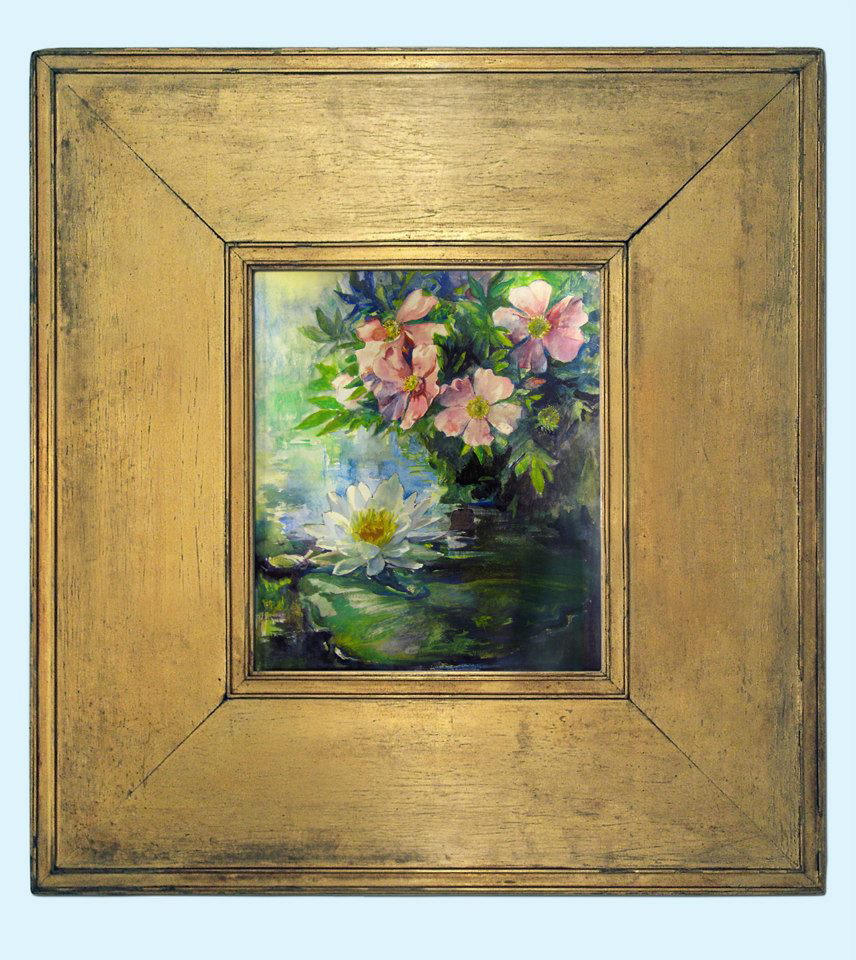
JOHN LAFARGE (1835 – 1910)
Wild Roses and Water Lily - Study of Sunlight, watercolor on paper, c. 1883, 11-3/4” x 9-3/4”. c. 1890s American painting frame; gilded wood with double reeded inner and outer elements and plain wide gilded frieze. Molding width: 5-13/16"
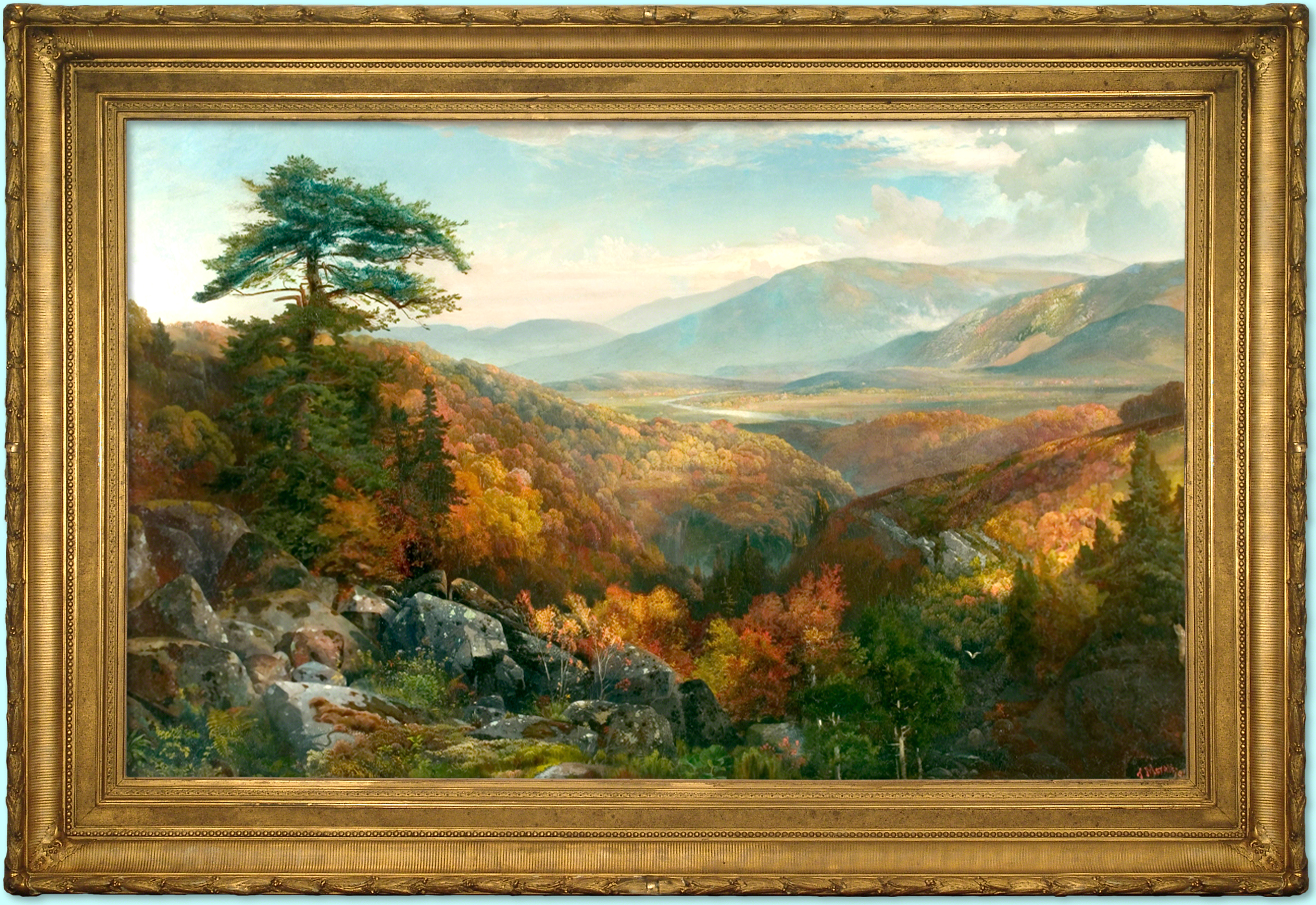
THOMAS MORAN (1837–1926)
Valley of the Catawissa in Autumn, ca. 1862, oil on canvas, 39-5/8" x 63-3/4". Custom-made replica of a 19th-century American Hudson River School painting frame; Neoclassical Revival style; gilded cast ornament on wood with sand panel. Molding width: 7” "In the spring of 1861, Thomas Moran and his three brothers went on a sketching and photography expedition to Catawissa, a small town on the Susquehanna River in the mountainous region of northeastern Pennsylvania. Thomas, who was also trained as an engraver, translated his sketches into illustrations for a travelogue that praised the Catawissa Railroad route as a picturesque touring itinerary. He also used his studies and, perhaps, his brother John's photographs, to develop subjects for oil paintings of the region. One year later, Moran exhibited a work entitled Valley of the Catawissa in Autumn-a painting that was only recently rediscovered in a private collection in Northwest Arkansas. Taking artistic liberties, Moran omitted the railroad and translated the original spring scene into a splendid panorama of autumnal mountain wilderness. The painting demonstrates his early mastery of the American landscape tradition, characterized by topographical specificity infused with poetic vision." — museum label text.

WILLIAM RIMMER (1816 – 1879)
Interior, Before The Picture, 1872, oil on board, 12-1/4” x 9-1/4”, 19th-century Empire frame, gilded applied composition ornament on wood. Molding width: 3-1/2” “Shown in profile, the face of the woman depicted in this painting conforms to ideals of beauty and intelligence prized in the nineteenth century as representing the highest level of Darwinian evolution. Rimmer published influential drawing manuals in which he explored Darwin’s controversial ideas through comparative drawings of apes and people of different ethnicities. His well-dressed figure exists within an opulent environment of art and fine furnishings, suggesting the prosperity some Americans experienced after the Civil War, as new business enterprises created enormous fortunes. Rimmer, however, never experienced fame or monetary success. The woman’s admiring gaze at a painting suggests Rimmer’s belief in psychometry, a spiritualist tenet that a person’s essence remains in objects they handled during life. Her contemplation of the picture may demonstrate her appreciation of art history, but also her communing with the artist’s spirit.” — museum label text
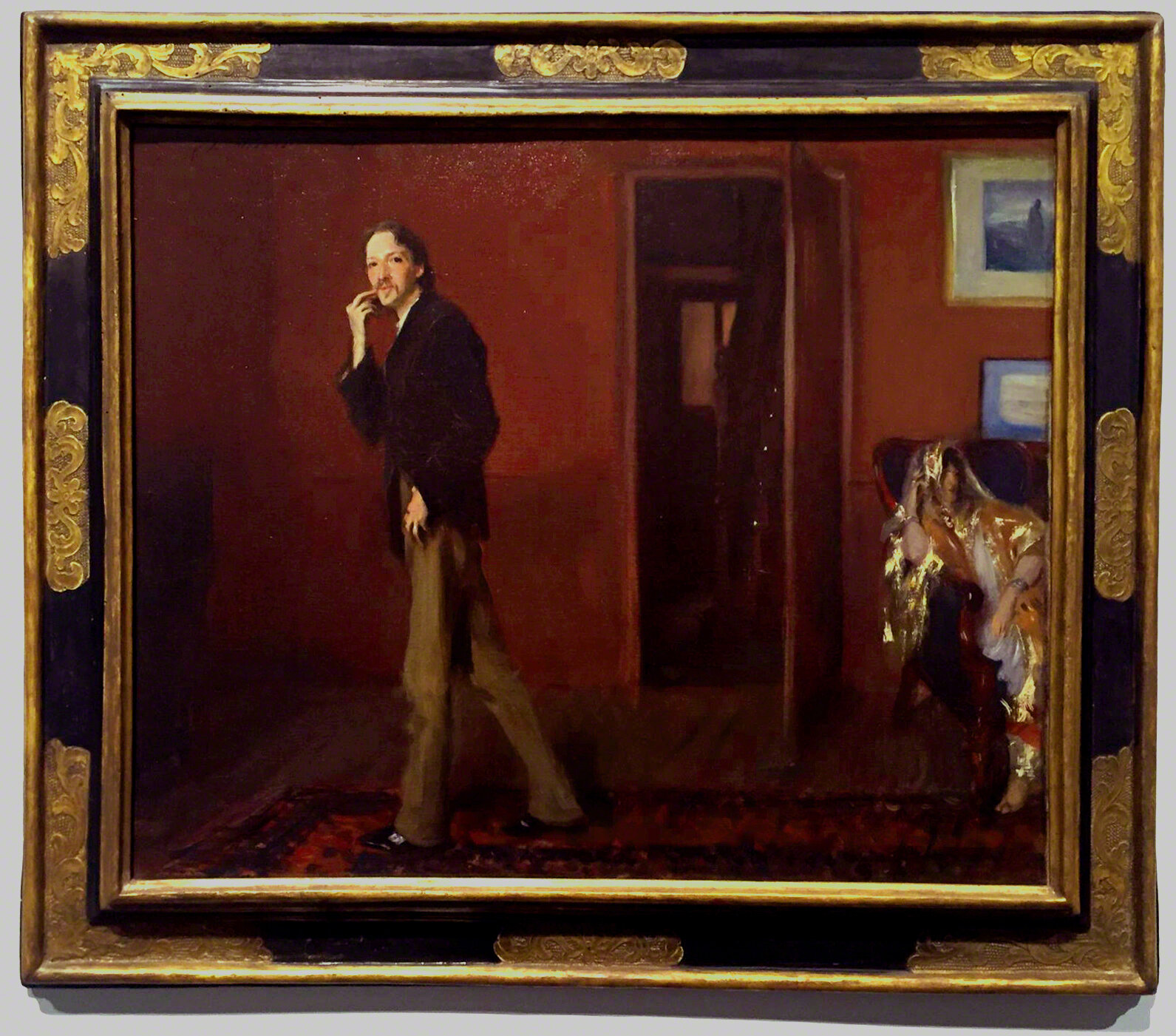
JOHN SINGER SARGENT (1856 – 1925)
Robert Louis Stevenson and His Wife, 1885, oil on canvas, 20-1/4 x 24-1/4 inches, 18th-century Italian painting frame,gilded and polychrome reverse cassetta profile with extensive punched corner foliate corner decoration, molding width: 3-1/4”
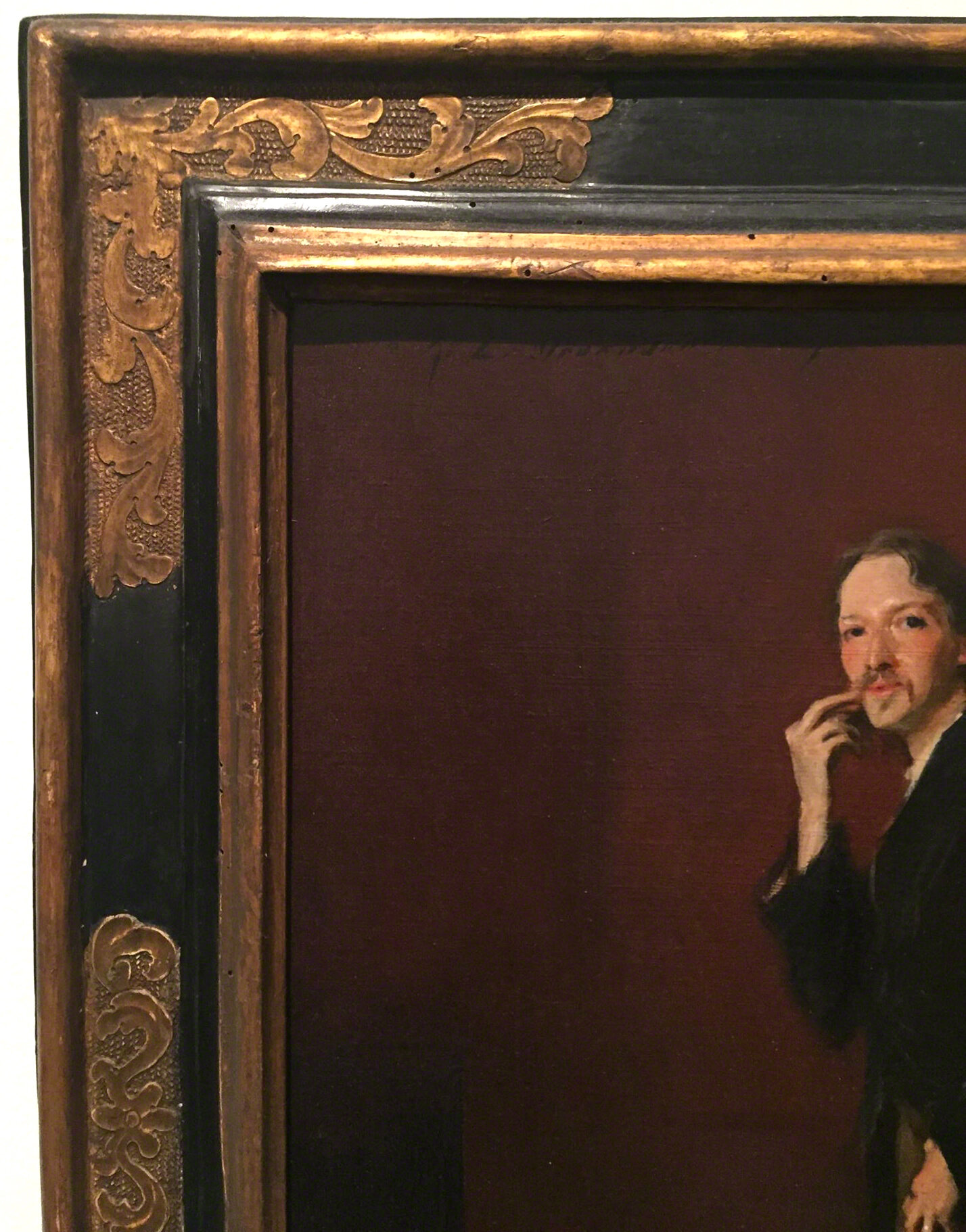
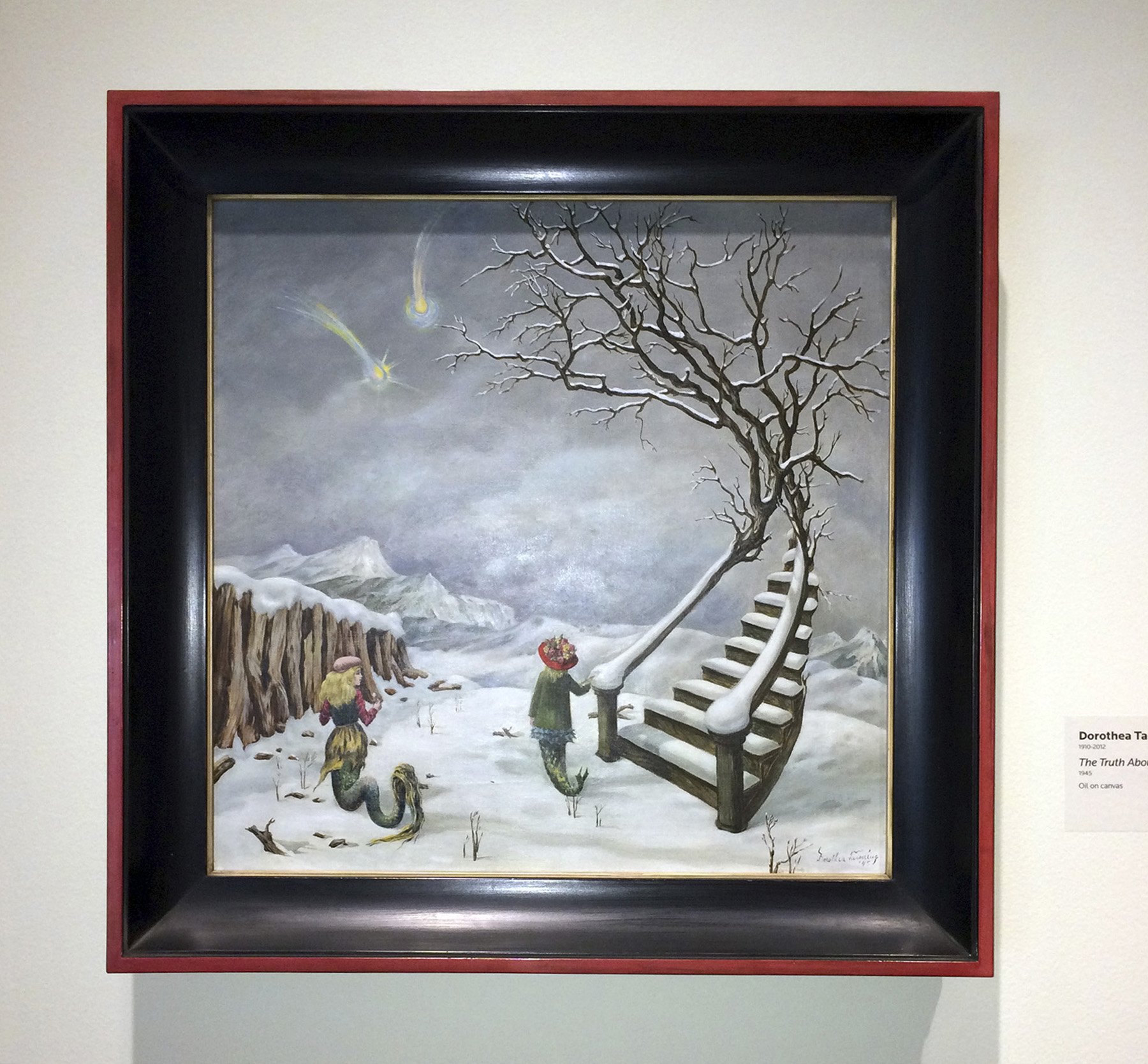
DOROTHEA TANNING (1910–2012)
The Truth About Comets, 1945, oil on canvas, 24 x 24 inches. Custom-made replica of original Dorothea Tanning frame, circa 1940s, hand-painted polychrome on milled wood. Molding width 3 inches. “A self-taught painter welcomed into the respected circle of New York surrealists, Dorothea Tanning described her work as a history of her dreams. Here, the steps and arm rails, as if elevating to another world, disappear into barren tree branches. The two brightly dressed anthropomorphic figures appear unalarmed despite being displaced in this uninhabited, snowy landscape. The rightmost figure, positioned with her back to the viewer, is captivated by the natural, fleeting beauty of the comet tails.” — museum text
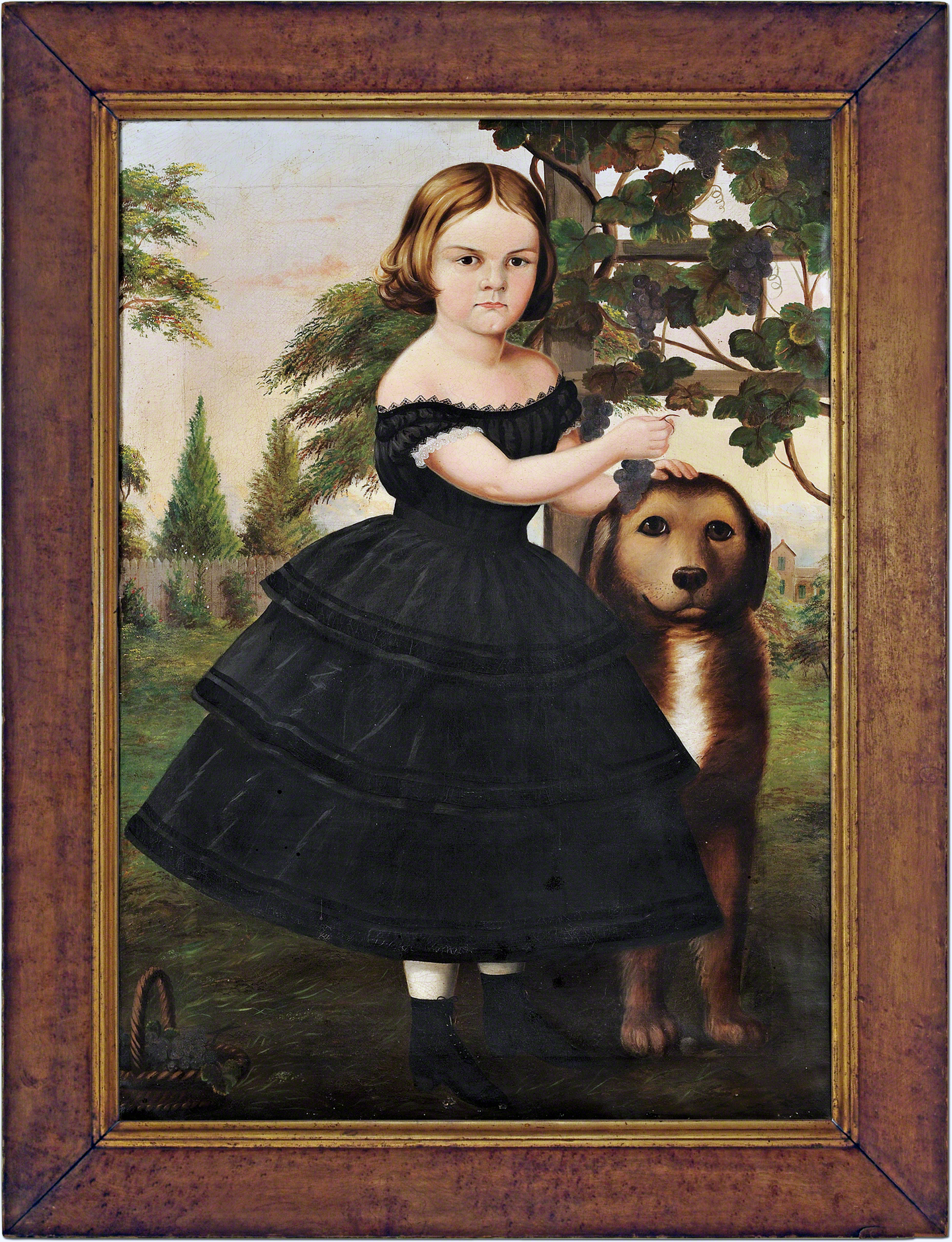
Attributed to SUSAN CATHERINE WATERS (1823 – 1900)
Portrait of a Girl and Her Dog in a Grape Arbor, ca. 1855-60, oil on canvas, 39-3/4” X 28”. Rare 19th-century painting frame; faux-painted bird’s eye maple on wide beveled wood profile; original gilded liner. Molding width: 4-1/8” Crystal Bridges Museum of American Art, Bentonville, Arkansas, 2010.2
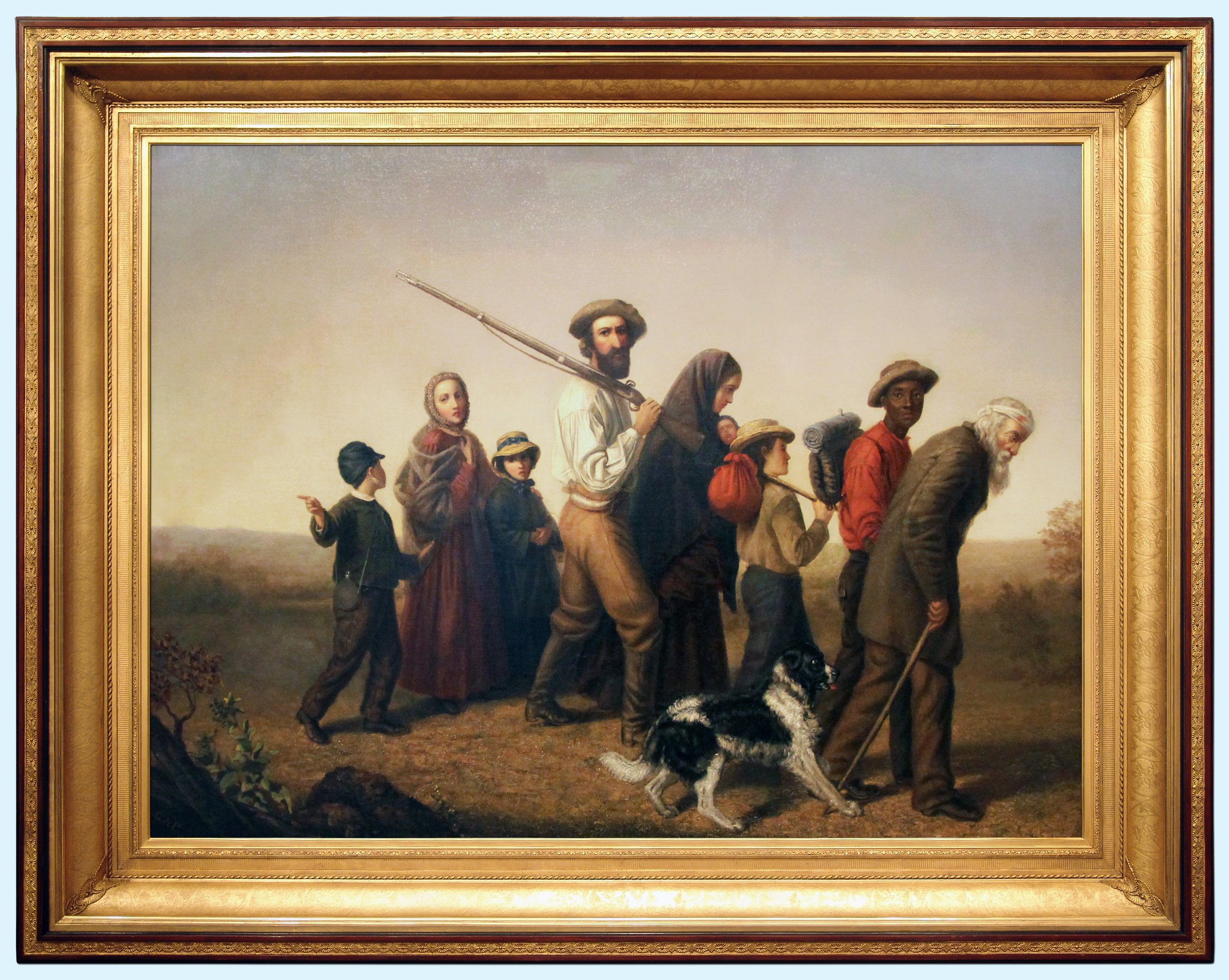
GEORGE W. PETTIT (1839–1910)
Union Refugees, 1865, oil on canvas, 40-1/4 x 54-1/4 in. Custom-made replica of Rare c. 1860s American frame. Earle Galleries, Philadelphia maker, outer wood molding, scrolling foliate stenciled sand pattern on ogee profile, molding width 7-1/2 in. “This Civil War scene presents the faces of men and women, young and old, black and white, who display hope, sadness, and defiance. The issue of Union refugees— people fleeing the Southern states—was frequently discussed in Northern newspapers during the war and became the subject for this Philadelphia painter. Who would take them in? What would be their fate? The subject remains relevant today, as refugees displaced by wars worldwide leave loved ones and belongings behind to seek a better life.” —museum label.
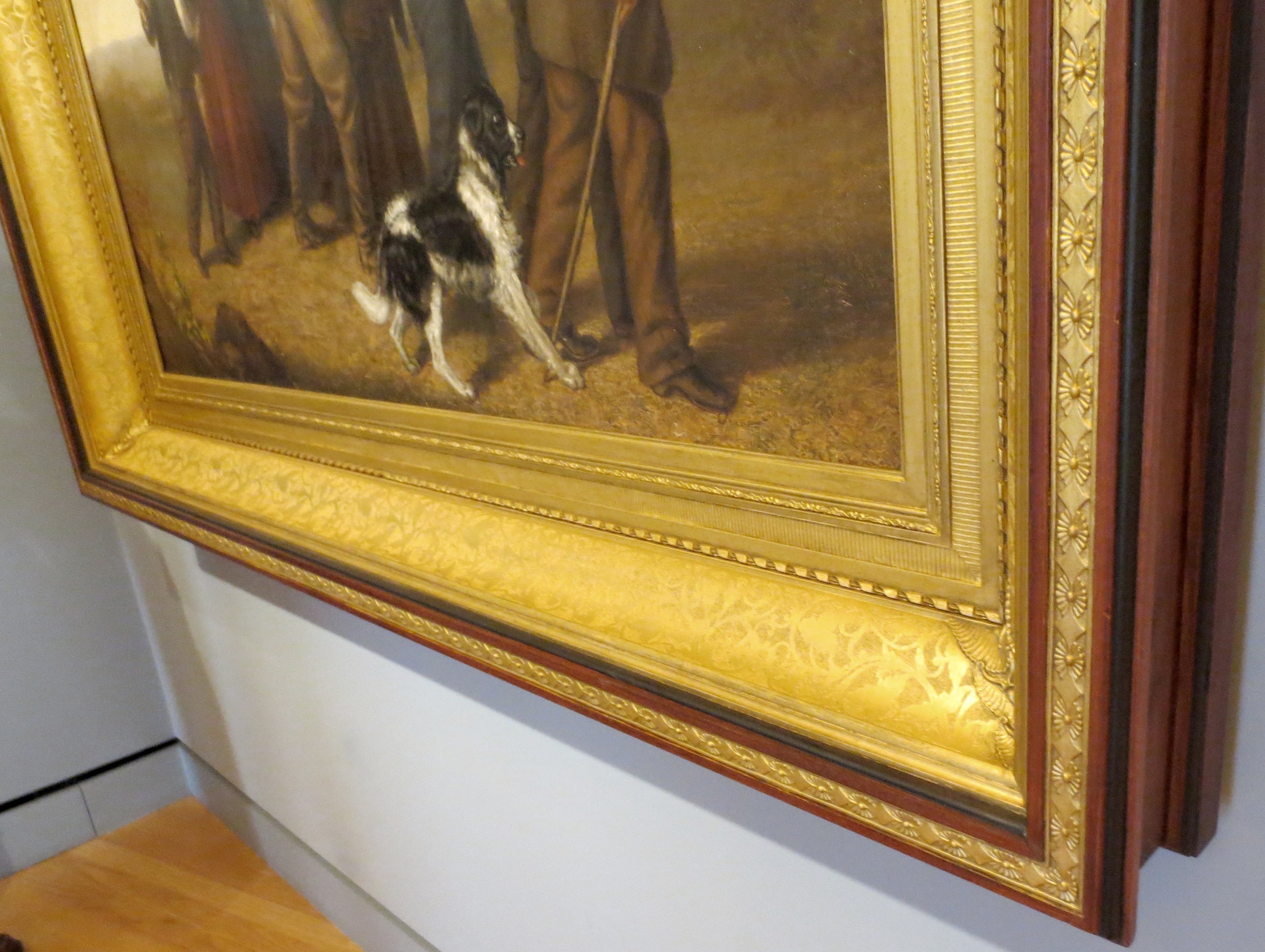


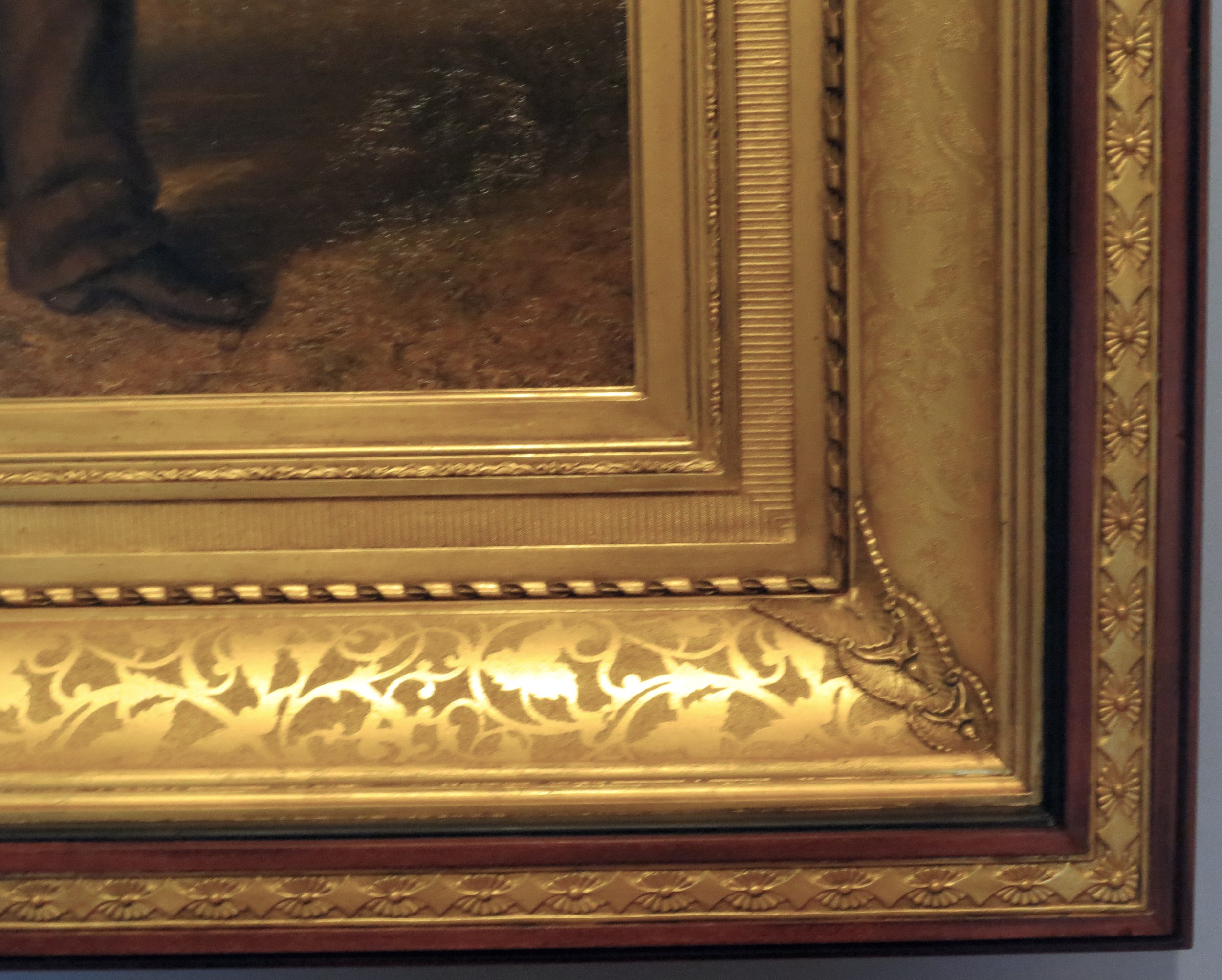
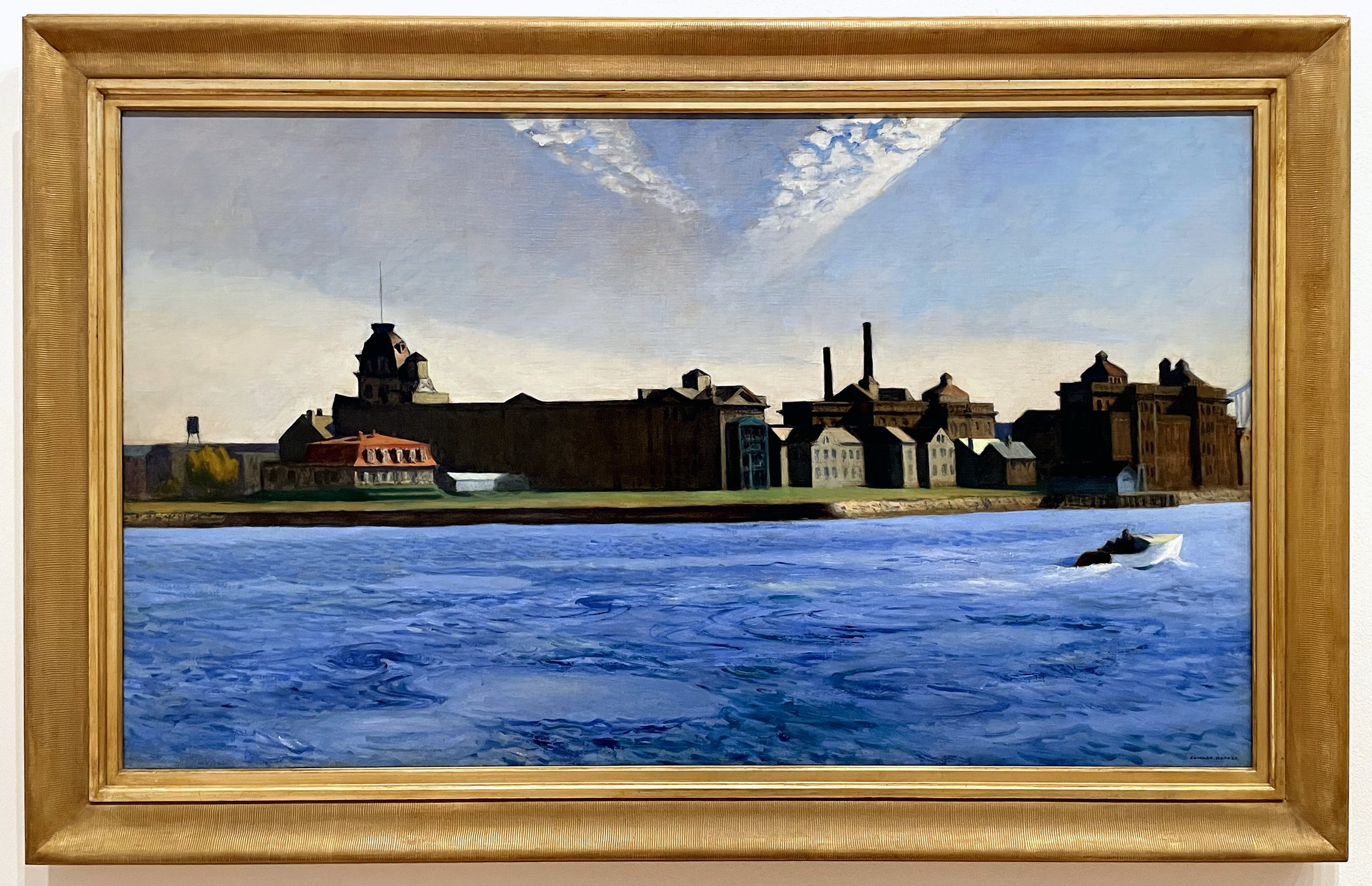
EDWARD HOPPER (1882–1937)
Blackwell’s Island, 1928, oil on canvas, 34-1/2” x 59-1/2” framed by Gill & Lagodich. Replica of custom frame originally designed and fabricated by Gill & Lagodich for Hopper’s ‘Nighthawks,’ (Art Institute of Chicago), variation is gold patination on white gold, combed gesso and bole on wood, wide ogee profile, molding width 5 in. “In Blackwell’s Island, Edward Hopper explored the intersection of nature and the urban environment at the location on New York’s East River. The painting features a wide expanse of sky above and turbulent cobalt blue water below, bisected by a shadowy skyline of buildings. In the past, Blackwell’s Island (today called Roosevelt Island) had been the site of a prison, mental asylum, and hospital, among other facilities. The island's varied architecture and seclusion appealed to Hopper.” —CBMAA label text. “The Horizontal City: Five paintings made between 1928 and 1935—Manhattan Bridge Loop; Blackwell’s Island; Macomb’s Dam Bridge; Apartment Houses, East River; and Early Sunday Morning—share nearly identical dimensions and the same panoramic format. Collectively, these paintings provide invaluable insight into Hopper’s contrarian vision of a horizontal city; as Alfred H. Barr observed of Hopper’s work in 1933: ‘His indifference to skyscrapers is remarkable in a painter of New York architecture.’ Describing his aims in Manhattan Bridge Loop, Hopper explained that the painting’s horizontal composition was an attempt to give “a sensation of great lateral extent” and bring attention to the cityscape beyond the frame; “I just never cared for the vertical,” he later quipped. His depictions of the wide spans of the city’s bridges, its industrial landscapes, and its low-slung buildings elevate the quotidian and prosaic over the iconic, offering a powerful counterpoint to the awe-inspiring views of the New York skyline celebrated in the news and in works by many of his contemporaries.” —Whitney Museum exhibition text.

